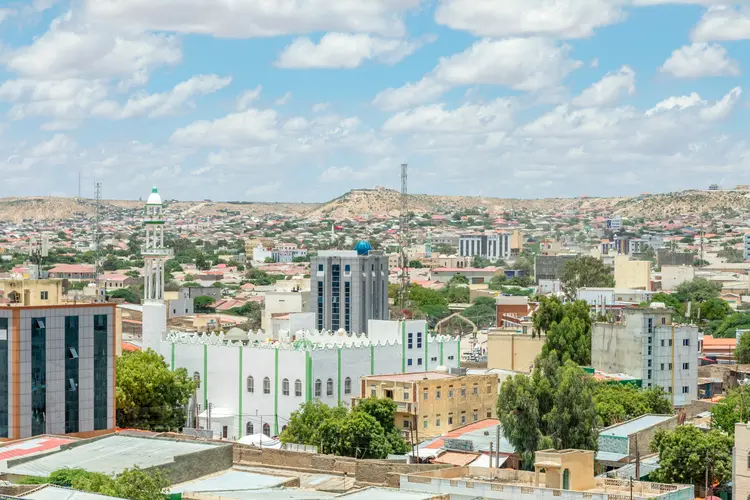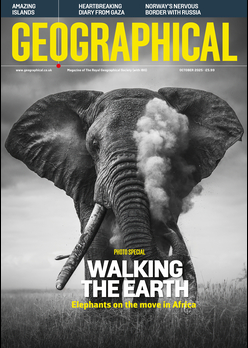
From Liberland to Catalonia, find out some of the countries and territories not recognised around the world
By
In pursuit of being acknowledged as a independent state, many nations and territories have become embroiled in intense geopolitical tensions and escalating conflict.
For example, the conflict between Israel and Palestine is one of the longest-spanning disputes in the world, with its origins stemming back in 1948. Since the beginning of the conflict, tens of thousands of lives have been lost and millions of people have been displaced in what the UN now term a ‘humanitarian catastrophe of epic proportions’.
Elsewhere on the planet, other conflicts have arisen through regions seeking independence. In Western Sahara, a 29-year ceasefire collapsed back in November 2020, with hostilities resuming along a barrier separating Moroccan and Polisario-controlled areas. Meanwhile in Somaliland, large-scale clashes between the region’s military and opposition militias have occurred throughout 2024, displaying more than 150,000 people.
Here we detail some of the countries that are yet to be fully recognised by all nations across the world…
Enjoying this article? Check out our related reads:
Catalonia
An autonomous community in Spain, Catalonia is one of the nation’s most highly industrialised regions, accounting for almost 19 per cent of Spanish GDP.
The region speaks Catalan, Spanish and Occitan, and has a population of 7.7 million people – making up 16 per cent of Spain’s population – in an area spanning 32,000 square kilometres. It comprises four provinces – Barcelona, Girona, Lleda and Tarragona.
Modern independence movements date back to the 19th century, but increasing pressure escalated following the 2008 financial crisis. In 2017, it culminated with an illegal referendum and the ensuing Spanish constitutional crisis. Though independence support has peaked at nearly 50 per cent, the public has shown demand for a lawful referendum.
The region has its own distinctive traditions, such as a festival to celebrate Sant Jordi – the patron saint of Catalonia – on 23 April. As well as this, a flower festival known as Temps de Flors (The Time of Flowers) runs in mid-May in cities including Girona and Barcelona.
Kurdistan
Spanning parts of eastern Turkey, northern Syria, northern Iraq and northwestern Iran, Kurdistan is a mountainous territory with an estimated population of around 25 to 30 million individuals.
Since ancient times, the land has been home to Kurds, whose language, culture and identity comprise one of the world’s largest – yet stateless – ethnic groups.
The region lies along the Zagros and Taurus mountains, with peaks exceeding 4,000 metres.
Archeological findings have suggested the Kurdish parts of Mesopotamia were among the earliest sites of animal domestication and agriculture, stretching back to before 7,000 BCE.
Northern Iraq is home to a significant proportion of Kurds, roughly six million individuals. Iraqi Kurdistan formed governance back in 1992, and broke away from federal Iraq in 2017 after a half-decade long civil war. In Iraqi Kurdistan, Kurdish make up appr
Liberland
Liberland is a sovereign state located between Croatia and Serbia on the west bank of the Danube River. The region came into existence due to a border dispute between Croatia and Serbia. The area is not claimed by either country, and remains unclaimed since the dissolution of Yugoslavia back in 1991.
For many decades, Liberland remained unoccupied – that is, until 2015 when it officially became the Free Republic of Liberland. Its total area is tiny – spanning just seven square km – making it the third smallest sovereign state, after the Vatican and Monaco.
Around 1000 citizens live in Liberland, whose governmental budget sits at a small sum of one million USD.
To grow the sovereign state even more, there are plans to create more companies there, expand its own jurisdiction and courts, along with growing its international presence as well as recognition in Croatia and Serbia.
Palestine
Palestine has an increasingly large degree of international recognition – as many countries including the UK, Canada and France announced recently they will recognise it as a state in September unless Israel meets certain conditions – with diplomatic missions abroad and teams which compete in sporting competitions.
However, due to the ongoing dispute with Israel, Palestine has no internationally agreed boundaries, no capital and no army.
The state of Palestine is currently recognised by 147 of the UN’s 193 member states. At the UN, its status as a ‘permanent observer state’ allows participation but no voting rights.
Sealand
Located 12 kilometres east of Suffolk in the North Sea lies Sealand, a micronation founded in 1967.
The nation was created by former British army major Roy Bates, who first occupied HM Fort Roughs – one of several sea forts built by the British to defend against air raids in WWII – in order to evade British broadcasting restrictions of radio. HM Fort Roughs is located on what is today known as Sealand.
Once Bates had consulted legal advice, he concluded the fort lay in terra nullius – land unclaimed by any state – and as such, he proclaimed it an independent nation, naming it the Principality of Sealand.
In 1987, the UK extended its territorial waters to include Sealand, but it has never formally asserted control over the micronation. In response, Sealand declared its own 12-mile zone in response, highlighting its desire to remain self-governed.
Somaliland
While not internationally recognised, Somaliland has its own currency, governmental institutions, a police force and a working political system.
The territory – located on the coast of Gulf of Aden – claimed independence in 1991 following the overthrow of Somali military dictator Siad Barre, and is bordered by Ethiopia to the south and west, and Djibouti to the northwest. Since its declaration of independence almost three decades ago, no country has recognised its sovereignty.
Prior to entering a union with Somalia, Somaliland used to be part of the British Empire until 1960.
With a population of 5.7 million individuals, the languages spoken in Somaliland include Somali, Arabic and English. Its president is Muse Bihi Abdi, who was elected back in November 2017.
In 2024, Ethiopia and Somaliland signed an memorandum of understanding for Ethiopia to use one of Somaliland’s ports.
Today, Mogadishu still continues to reject Somaliland’s call for independence, but Somaliland continues to remain optimistic for an independent future.
Transnistria
A narrow strip of land located between the Dniester river and the Ukrainian border, Transnistria – also known as Trans-Dniester – broke away from Moldova in 1990. International countries do not recognise Transnistria’s self-declared statehood. The region – spanning 3,500 square km – is economically, politically and militarily supported by Russia, which hosts an estimated 1,500 soldiers there. As well as this, a major Russian weapons facility is stationed in the region, the Cobasna ammunition depot.
Transnistria has a population of 367,000, with languages spoken there including Russian, Romanian and Ukrainian. The region also has its own currency, constitution, flag, parliament and anthem.
After Russia’s invasion of Ukraine in 2022, Ukraine sealed its borders with Transnistria, making the region entirely reliant on Moldova for imports.
Transnistria has joined the free trade zone and visa-free regime in the EU, which has led to a significant rise in the. number of Transnistrian residents applying for Moldovan passports.
Western Sahara
Spanning across an area more than 250,000 square kilometres, Western Sahara is a territory bounded by the Atlantic Ocean on the west and northwest, by Morocco on the north, by Algeria for several miles in the northeast, and by Mauritania on the east and south.
As of 2024, the region has a population of around 670,000 – a sparse population considering its size due to the arid desert that makes up much of its landscape. Around 40 per cent of its inhabitants live in Laayoune, the largest city in Western Sahara.
Western Sahara gained independence from colonial rule in 1956, but was shortly claimed by Morocco. It is a disputed territory and is the last African colonial state yet to achieve its independence.
Around 20 per cent of the territory is controlled by the Sahrawi Arab Democratic Republic (SADR), while the remaining 80 per cent is controlled and administered by Morocco.




